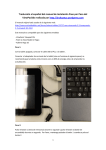Download About this User`s Manual
Transcript
About this User’s Manual This user’s manual is designed to let you easily find the information you need to get the most from your notebook. You will come across the following icons in this manual: Helpful pointers and tricks to get more from your notebook To help you note and avoid possible damage to your notebook’s hardware or software, or loss of your work Points out possible damage to property, personal injury or death Information in this document is subject to change without notice. © Point of View B.V. 2010. All rights reserved. Trademarks used in this document: Microsoft and Windows are registered trademarks of Microsoft Corporation. Other trademarks and trade names may be used in this document to refer to either the entities claiming the marks and names or their products. Contents ABOUT THIS USER’S MANUAL .............................................................................................................. SAFETY INSTRUCTIONS.......................................................................................................................... CHAPTER 1 INTRODUCING YOUR NOTEBOOK ............................................................................... 1.1 FRONT SIDE ....................................................................................................................................... 1 1.1.1 Camera .................................................................................................................................... 1 1.1.2 Caps Lock (Blue) ..................................................................................................................... 2 1.1.3 Num Lock LED (Blue) ............................................................................................................. 2 1.1.4 Wireless Button ........................................................................................................................ 2 1.1.5 WOW Video Button .................................................................................................................. 2 1.1.6 WOW Audio Button ................................................................................................................. 2 1.1.7 Power Buttons ......................................................................................................................... 2 1.1.8 Power LED (Blue) ................................................................................................................... 2 1.1.9 Battery LED (Blue/Amber) ...................................................................................................... 2 1.1.10 HDD accessing state Blue LED............................................................................................. 2 1.1.11 Wireless Status ....................................................................................................................... 2 1.2 RIGHT SIDE ........................................................................................................................................ 3 1.2.1 HDMI Port .............................................................................................................................. 3 1.2.2 USB 2.0.................................................................................................................................... 3 1.2.3 RJ-45 ....................................................................................................................................... 4 1.2.4 Kensington Lock ...................................................................................................................... 4 1.3 LEFT SIDE .......................................................................................................................................... 5 1.3.1 DC-in....................................................................................................................................... 5 1.3.2 USB 2.0.................................................................................................................................... 5 1.3.3 Media Card.............................................................................................................................. 5 1.4 BOTTOM SIDE .................................................................................................................................... 6 1.4.1 To remove the Battery Pack:.................................................................................................... 6 1.4.2 Battery Release Latch.............................................................................................................. 6 CHAPTER 2 CARING FOR YOUR NOTEBOOK ................................................................................... 2.1 CARING FOR YOUR NOTEBOOK.......................................................................................................... 1 2.1.1 Cleaning Your Notebook and Keyboard .................................................................................. 1 2.1.2 Cleaning the Display ............................................................................................................... 1 2.1.3 Cleaning the Touch Pad........................................................................................................... 1 2.1.4 Precautions.............................................................................................................................. 1 2.2 TRAVELING ........................................................................................................................................ 3 2.2.1 Identifying Your Notebook ....................................................................................................... 3 2.2.2 Packing Your Notebook ........................................................................................................... 3 2.2.3 Travel Tips ............................................................................................................................... 3 CHAPTER 3 PERIPHERALS..................................................................................................................... 3.1 ADDING AND REMOVING SD/MMC/MS CARDS ................................................................................ 1 CHAPTER 4 THE POWER SYSTEM ....................................................................................................... 4.1 POWER MANAGEMENT ...................................................................................................................... 1 4.1.1 Managing Your Notebook’s Power .......................................................................................... 1 4.1.2 Power Management Modes ..................................................................................................... 1 4.1.2.1 Sleep Mode.....................................................................................................................................1 4.1.2.2 Hibernate Mode..............................................................................................................................2 4.1.3 Power Options Properties ....................................................................................................... 2 4.1.3.1 Select a power plan ........................................................................................................................3 4.1.3.2 Power buttons and password protection .........................................................................................3 4.1.3.3 Create a power plan........................................................................................................................4 4.1.4 Speed Step................................................................................................................................ 4 4.2 BATTERY ............................................................................................................................................ 5 Contents 4.2.1 Battery Performance ............................................................................................................... 5 4.2.2 Checking the Battery Charge................................................................................................... 5 4.2.3 Power Meter ............................................................................................................................ 5 4.2.4 Low-Battery Warning............................................................................................................... 5 4.2.5 Charging the Battery ............................................................................................................... 6 4.2.6 Low-Battery Warning............................................................................................................... 6 4.2.7 Removing the Battery .............................................................................................................. 7 4.2.8 Installing a Battery .................................................................................................................. 7 4.2.9 Storing a Battery...................................................................................................................... 7 4.2.10 Working With Extra Battery Packs ........................................................................................ 7 4.2.11 Maximizing Battery Life......................................................................................................... 7 CHAPTER 5 THE BIOS SETUP PROGRAM........................................................................................... 5.1 INTRODUCTION .................................................................................................................................. 2 5.2 NAVIGATING THROUGH THE BIOS SETUP PROGRAM .......................................................................... 3 5.2.1 Accessing the BIOS Setup Program......................................................................................... 4 5.2.2 Launching Submenus............................................................................................................... 5 5.2.3 Saving Changes and Exiting the Setup Program..................................................................... 5 5.3 THE MAIN MENU ............................................................................................................................... 6 5.4 SECURITY MENU ................................................................................................................................ 8 5.5 THE BOOT MENU ............................................................................................................................. 10 5.6 THE EXIT MENU .............................................................................................................................. 11 Safety Instructions Use the following safety guidelines to help protect yourself and your notebook. General Warnings • Do not operate your portable computer for an extended period of time with the base resting directly on your body. With extended operation, heat can potentially build up in the base. Allowing sustained contact with the skin could cause discomfort or, eventually, a burn. • Do not attempt to service the computer yourself. Always follow installation instructions closely. • To avoid personal injury from electric shock or fire: − Completely power down the computer when replacing memory modules, cleaning the computer, its components, or chassis, or performing operations requiring similar steps. To do this, first turn the power off at the power switch, remove the battery, and then disconnect the AC adapter from the electrical outlet or from any other type of external power source, such as an external battery. − Do not operate the computer near water, for example, near a bathtub, kitchen sink or laundry tub, in a wet basement, by a swimming pool, or in the rain. − Do not connect or disconnect any cables or perform maintenance or reconfiguration of this product during an electrical storm. − Avoid using the wired modem or LAN during an electrical storm, as a remote risk of electric shock from lightning exists. − Do not push objects into the air vents or openings of your notebook or accessories. Doing so can short out interior components and may cause fire or electric shock. − When installing memory modules, ground yourself by touching a grounded conductive surface, such as a device with a grounded plug. Avoid touching the pins and leads on the memory module or internal circuitry of the computer. • When setting up the computer for work, place it on a level surface. • Handle components with care. Hold a component such as a memory module by its edges, not its pins. • If the battery pack leaks and the fluid enter your eyes, do not rub them. Instead, rinse your eyes with clean running water and immediately seek medical attention. Otherwise, eye injury may be resulted. • If acid leaking from the battery pack contacts your skin or clothing, immediately wash it away with running water. Otherwise, skin inflammation may occur. • Operate the computer at the recommended temperature range of +5oC to +35oC (+41oF to +95oF). Store it at a temperature of -20oC to +60oC (+4oF to +140oF). • Your notebook shipped with the plastic dummies installed in PCMCIA or Express Card. Dummies protect unused slots from dust, metal object, or other particles. Save the dummy for use when no PCMCIA or Express Card is installed in the slot. Power Cord & Adapter Warnings • See the installation instructions before connecting to the power supply. • Use only the power cord indicated in this manual. • Power cord sets for use in other countries must meet the requirements of that country. Use the appropriate AC adapter and power cord for your locale. • If you use an extension cord with your AC adapter, ensure that the total ampere rating of the products plugged into the extension cord does not exceed the ampere rating of the extension cable. • When using your power cord, make sure to position it around objects so it will not be cut or punctured. • When you disconnect a cable, pull on its connector by its strain relief loop, not on the cable itself. As you pull out the connector, keep it evenly aligned to avoid bending any connector pins. Also, before you connect a cable make sure both connectors are correctly oriented and aligned. • Be sure that nothing rests on your AC adapter’s power cable and that the cable is not located where it can be tripped over or stepped on. • Use only the AC adapters that are approved for use with this computer. Use of another type of adapter may risk fire or explosion. • Before you connect the computer to a power source, ensure that the voltage rating of the AC adapter matches that of the available power source. − 115 V/60 Hz in most of North and South America and some Far Eastern countries such as South Korea and Taiwan. − 100 V/50 Hz in eastern Japan and 100 V/60Hz in western Japan. − 230 V/50 Hz in most of Europe, the Middle East, and the Far East. − If you use an extension cable with your AC adapter, ensure that the total ampere rating of the products plugged in to the extension cable does not exceed the ampere rating of the extension cable. • Place the AC adapter in a ventilated area, such as a desktop or on the floor, when you use it to run the computer or to charge the battery. Do not cover the AC adapter with papers or other items that will affect its cooling; also, do not use the AC adapter while it is inside a carrying case. • Disconnect power cords and cables by grasping the connector, not by pulling on the cable itself. As you pull out the connector, keep it evenly aligned to avoid bending any connector pins. Before you connect a cable, please make sure both connectors are correctly aligned. • To remove power from the computer, turn it off, remove the battery, and disconnect the AC adapter from the electrical outlet. Battery Pack Warnings • Do not carry a battery in your pocket, purse, or other container where metal objects (such as car keys) could short-circuit the battery terminals. The resulting excessive current flow can cause extremely high temperatures and may result in damage from burns. • Danger of explosion may occur if battery is incorrectly replaced. Replace only with the same or equivalent type battery recommended by the manufacturer. • Exposing batteries to fire can cause explosions. Check with local authorities for disposal instructions. • Do not use or leave the battery pack near a heat source. Heat can melt the insulation and damage other safety features, possibly leading it to leak acid, overheat, emit smoke, burst and/or ignite. • Do not allow the battery pack to get wet. Its protective features can be damaged. Abnormal chemical reactions may occur, possibly leading it to leak acid, overheat, emit smoke, burst and/or ignite. • Do not crush, disassemble, puncture, or incinerate the short external contacts of a battery pack. • Do not connect the positive (+) and negative (-) terminals with a metal object such as a wire. Short-circuiting may occur, causing acid leakage, overheat, emit smoke, burst and/or ignite. • Do not use an apparently deformed or damaged battery pack, which may leak acid, overheat, emit smoke, burst and/or ignite. • If the battery pack leaks, gives off a bad odor, generates heat, becomes discolored or deformed, or in any way appears abnormal during use, recharging or storage, immediately remove it from the computer or charger and stop using it. Battery Pack Disposal • Dispose of the lithium ion battery packs at approved disposal sites only. To locate an appropriate site, contact the solid waste disposal officials where you live or look for a rechargeable battery recycling website that lists disposal locations near you. • Do not dispose of battery packs in a fire, throw them in a trash receptacle, put them in a recycling bin not intended for their disposal, or otherwise discard them in a manner that may result in their being hazardous to the environment. Important Safety Instructions Read these instructions carefully and save them for future reference. • Follow all warnings and instructions given to you for this product. • Unplug this product from the wall outlet before cleaning. Do not use liquid cleaners or aerosol cleaners. Use a damp cloth for cleaning. • Do not use this product near water. • Do not place this product on an unstable cart, stand, or table. • Slots and openings on the back or bottom are provided for ventilation. To ensure reliable operation of the product and to protect it from overheating, do not block or cover these openings. Avoid placing the product on a bed, sofa, rug, or similar surface to prevent from blocking these openings. This product should never be placed near or over a radiator or a heat register, or in an enclosure unless proper ventilation is provided. • This product should be operated from the type of power indicated on the marking label. If you are not sure the type of power available, consult your dealer or local power company. • Do not allow anything to rest on the power cord. • If an extension cord is used with this product, make sure that the total ampere rating of the equipment plugged into the extension cord does not exceed the extension cord ampere rating. Also, make sure that the total rating of all products plugged into the wall outlet does not exceed the fuse rating. • Never push objects of any kind into any cabinet slots as they may touch dangerous voltage points or short-out parts that could result in a fire or electric shock. Never spill any kind of liquid on the product. • Do not attempt to service this product by yourself. As opening or removing covers, you will be exposed to the dangerous voltages or other risks. Refer all servicing to qualified service personnel. • Unplug this product from the wall outlet and refer servicing to qualified service personnel under the following conditions: a. When the power cord or plug is damaged or frayed. b. As liquid is spilled into the product. c. The product is exposed to rain or water. d. If the product does not operate normally when the operating instructions are followed, adjust only those controls that are covered by the operating instructions. Improper adjustment of other controls may result in damage and will often require extensive work by a qualified technician to restore the product to normal condition. e. The product has been dropped or the cabinet has been damaged. f. The product exhibits a distinct change in performance, indicating a need for service. EMC Regulatory Information This product is designed and tested to comply with the following Electromagnetic compatibility standards. FCC Notice “Declaration of Conformity Information” This equipment has been tested and found to comply with the limits for a Class B digital device, pursuant to Part 15 of the FCC Rules. These limits are designed to provide reasonable protection against harmful interference in a residential installation. This equipment generates, uses, and can radiate radio frequency energy. If the equipment is not installed or used in accordance with the instructions; it may cause harmful interference to radio communications. However, there is no guarantee that interference will not occur in a particular installation. If this equipment does cause harmful interference to radio or television reception, which can be determined by turning the equipment off and on, the user is encouraged to try to correct the interference by one of following measures: • Reorient or relocate the receiving antenna. • Increase the separation between the equipment and the receiver. • Connect the equipment into an outlet on a circuit different from that to which the receiver is connected. • Consult the dealer or an experienced radio/TV technician for help. This device complies with Part 15 of the FCC Rules. Operation is subject to the following two conditions: g. This device may not cause harmful interference. h. This device must accept any interference received, including interference that may cause undesired operation. CE Notice (European Union) EU Declaration of Conformity Chapter 1 Introducing Your Notebook POV Mobii ULV 13.3” User Manual 1.1 Front Side The following picture shows the front side of your notebook. 1 Camera 8 WOW Audio 2 Microphone 9 Power Button 3 Caps Lock(Blue) 10 Power(Blue) 4 Num Lock(Blue) 11 Battery(Blue/Amber) 5 Wireless Button 12 HDD(Blue) 6 Program DJ 13 Wireless Status 7 WOW Video 1.1.1 Camera 1-1 Chapter 1 Introducing Your Notebook The built-in camera supports a 1.3 or 2.0 mega pixels CMOS via USB2.0 interface. 1.1.2 Caps Lock (Blue) Caps lock LED (Blue): Caps Lock State of Keyboard. In normal mode (Cursor and Num function are disable), when users press Hot Key, the Cursor LED will be on. 1.1.3 Num Lock LED (Blue) Number Lock LED (Blue): Number Lock State of Keyboard. 1.1.4 Wireless Button It will enable/disable Wireless function. 1.1.5 WOW Video Button WOW Video is a setting assortment for Video conditions. 1.1.6 WOW Audio Button WOW Audio is a setting assortment for audio conditions. 1.1.7 Power Buttons Press to turn your notebook on. 1.1.8 Power LED (Blue) Power LED and Suspend LED indicate the systems power states . 1.1.9 Battery LED (Blue/Amber) ( ) Battery states LED is one dual-color LED indicator both of Blue and Amber color. 1.1.10 HDD accessing state Blue LED ( ) Reflect the activities of Blue LED. Note: LED is controlled directly by hardware. 1.1.11 Wireless Status Switch ON/OFF Fn+F12 1-2 POV Mobii ULV 13.3” User Manual 1.2 Right Side 1 HDMI 2 e-SATA 3 USB 2.0 4 CRT 15-pin 5 RJ-45 6 Kensington Lock 1.2.1 HDMI Port The High-Definition Multimedia Interface (HDMI) is a compact audio/video connector interface for transmitting uncompressed digital streams. It represents a digital alternative to consumer analog standards such as Radio Frequency (RF) coaxial cable, composite video, S-Video, SCART, component video, D-Terminal, and VGA 1.2.2 USB 2.0 USB is a peripheral expansion standard that supports data-transfer rates up to 480 Mbps. USB peripherals has a single standard for cables and connectors. You can install and remove USB devices while the computer is on. This is called “hot swapping”. 1-3 Chapter 1 Introducing Your Notebook 1.2.3 RJ-45 The RJ-45 network jack allows you to connect your notebook to a local area network (LAN). Be careful not to plug the telephone line into the slightly larger network connector. 1.2.4 Kensington Lock A Kensington Security Slot is a small, metal-reinforced hole found on almost all small or portable computer and electronics equipment, particularly on expensive and/or relatively light ones, such as laptops, computer monitors, desktop computers, gaming consoles, and video projectors. It is used for attaching a lock-and-cable apparatus, in particular those from Kensington. 1-4 POV Mobii ULV 13.3” User Manual 1.3 Left Side 1 DC-in 2 USB 2.0 3 Microphone 4 Headphone 5 Media Card 1.3.1 DC-in Use this connector to attach the AC adapter to your notebook. You can connect an AC adapter when your notebook is switched on or off. Ensure you use a compatible cable or correctly connect the cable to the power strip or electrical outlet. 1.3.2 USB 2.0 USB is a peripheral expansion standard that supports data-transfer rates up to 480 Mbps. USB peripherals has a single standard for cables and connectors. 1.3.3 Media Card Support one SD/MMC/MS card, which is used in digital still camera and various forms of portable information equipment. 1-5 Chapter 1 Introducing Your Notebook 1.4 Bottom Side The following picture shows the bottom side of your notebook 1 Battery Latch 2 Battery Knob 3 RAM Door 4 HDD Door 1.4.1 To remove the Battery Pack: Move the Battery Lock Switch to the right (Unlock position). Slide the Battery Release Latch to the left and gently pry the Battery Pack from the computer chassis. 1.4.2 Battery Release Latch The Battery Release Latch secures the battery pack. To release, slide the latch and then remove the battery pack from the bay. 1-6 Chapter 2 Caring for Your Notebook POV Mobii ULV 13.3” User Manual 2.1 Caring for Your Notebook 2.1.1 Cleaning Your Notebook and Keyboard Shut your notebook down, turn it off and disconnect it from the electrical outlet and any external devices, such as the printer. Remove the battery pack. Use the brush attachment of your vacuum cleaner to gently remove dust from your notebook’s openings and keyboard. Use a slightly moist soft, lint-free cloth to wipe your notebook and keyboard. Use only the water or the recommended computer cleaner. 2.1.2 Cleaning the Display Shut your notebook down, turn it off and disconnect it from the electrical outlet and any external devices, such as the printer. Remove the battery pack. Use a slightly moistened soft, lint-free cloth to wipe your notebook’s display. Use only the water or the recommended computer cleaner. 2.1.3 Cleaning the Touch Pad Shut your notebook down, turn it off and disconnect from the electrical outlet and any external devices, such as the printer. Remove the battery pack. Use a slightly moistened soft, lint-free cloth to carefully wipe the Touch Pad, being careful not to allow the moisture into the gaps of your notebook. Use only the water or the recommended computer cleaner. 2.1.4 Precautions • Do not spill the liquid on the keyboard. If the liquid is spilt on the keyboard, turn your notebook off immediately. Leave off overnight to let it completely dry out before using it again. • Do not turn off your notebook if the drive light indicates the drive is active. Turning off your notebook while it is reading from or writing to a disk may damage the disk, the drive, or both. 2-1 Chapter 2 Caring for Your Notebook • Keep your notebook and disks away from the objects that generate the strong magnetic fields, such as the stereo speakers. Information on disks is stored magnetically. Placing the magnet too close to the disk can erase the important files. • Scan all new files for viruses. This precaution is especially important for the files you receive via email, disk or download from the Internet. You will need the special program to scan for viruses. For further information, please contact with your notebook dealer. • To ensure HDD function and the integrity of the saved data, please follow the instructions below: Protect your notebook from any impact during its operation. Do not use your notebook during the transportation such as in the car. Do not put your notebook in the car if it is directly exposed under the sun. Do not place any heavy objects on the LCD monitor. Use the AC adapter coming with the package instead of other adapters. POV Mobii ULV 13.3” User Manual 2.2 Traveling 2.2.1 Identifying Your Notebook Attach a nametag or business card to your notebook, or use the permanent marker or stencil to write a unique identifying mark (such as your driver’s license number) on the case. Create a file on the Desktop called if found. Place information such as your name, address, and telephone number in this file. Contact your credit card company to ask if it offers coded identification tags. 2.2.2 Packing Your Notebook • Remove any external devices attached to your notebook and store them in a safe place. • Fully charge the main battery and any spare batteries you plan to carry with you. • Turn off your notebook or put the computer into hibernate mode. • Disconnect the AC adapter. • Remove any extraneous items, such as paper clips, pens, and papers, from the keyboard and then close the display. • Pack your notebook and accessories in their carry case. • Avoid packing the computer with items such as shaving cream, colognes, perfumes, or food. • Protect your notebook, the batteries, and the hard drive from hazards such as extreme temperatures, dirt, dust, liquids, or overexposure to sunlight. • Pack your notebook so that it does not slide around in the trunk of the car or in an overhead storage compartment. When traveling in the air, never check in your notebook as baggage. 2.2.3 Travel Tips • If you are traveling abroad, you can carry the proof of ownership—or of your right for using your notebook if it is company-owned—to speed your passage through customs. Investigate the customs regulations of the countries you plan to visit and 2-3 Chapter 2 Caring for Your Notebook consider acquiring an international carnet (also known as a merchandise passport) from your government. • Ensure that you know which electrical outlets are used in the countries you will visit, and prepare the appropriate power adapters. • Check with your credit card company for information about any kinds of emergency travel assistance it offers to the users of the portable computers. • When traveling in the air, please ensure that you have a charged battery available in case you are asked to turn on your notebook. • Before using your notebook on the airplane, please verify that such usage is permitted. Some airlines forbid the use of electronic devices during the flight. All airlines forbid the use of electronic devices during taking-off and landing. Never pass your notebook through a metal detector. Send it through an X-ray machine, or have it manually inspected. Chapter 3 Peripherals POV Mobii ULV 13.3” User Manual 3.1 Adding and Removing SD/MMC/MS Cards Insert the SD/MMC/MS card into the card reader slot. To remove the SD/MMC/MS card, please push it in gently and then it ejects automatically. Before removing an SD/MMC/MS card, stop it running from the configuration utility on the taskbar. Failure to do so could result in the data loss. 3.2 Memory Modules You can add more memory modules to your notebook to improve its performance. To install a memory module: Make sure the computer is turned off and remove screws securing the RAM cover. 3-1 Chapter 3 Peripherals There are two memory module ports. Place the new memory module in the slot, matching up the notch along its connector rim with the tooth in the connection slot. When the module is secured, please press down gently until it snaps into place. Depending on how much additional memory you require, you may need to replace the original memory module. To remove a memory module: Make sure the computer is turned off and remove screws securing the RAM cover. Pop out both silver latches holding the memory module into place. The module pops up. Grasp the outer edges of the memory module with the thumb and forefinger, and then gently remove it. 3-2 Chapter 4 The Power System POV Mobii ULV 13.3” User Manual 4.1 Power Management 4.1.1 Managing Your Notebook’s Power See 4.2 Battery for more information on getting the best performance from the battery packs. Use your notebook connected to an electrical outlet as often as possible as the battery life expectancy is affected by the number of times it is charged. Your notebook comes with built-in power management. You can configure it through the Power Options program in the Control Panel, to sleep, hibernate, and wake according to the specific situations. The Advanced settings can be accessed via Start > Control Panel > System and Maintenance > Power Options. On the Select a power plan page, click Change plan setting under the plan that you want to change. Click Change advanced power settings. Expand the Power buttons and lid category to configure the settings. When leaving your notebook unattended for the long period, place it in Standby or Hibernate Mode. You can exit either power management mode by pressing the Power Button. 4.1.2 Power Management Modes 4.1.2.1 Sleep Mode This mode conserves power by switching off the hard drive and display after the preset period of inactivity (a time-out). When Sleep Mode is exited, your notebook will return to the same operating state it was before entering sleep. In Sleep Mode, if your notebook loses power from both of the electrical outlet and the battery, the data in your notebook may be lost. To enter Sleep Mode in Windows 7: Start > X > Sleep. Or Set your notebook to enter Sleep Mode, as you: 4-1 Chapter 4 The Power System • Close the lid of your notebook • Press the power button • Press the start menu power button The settings can be accessed via Power Options: Advanced settings window. See 4.1.1 Managing Your Notebook’s Power To exit Sleep Mode, please press the Power Button. You cannot exit Sleep Mode by using any key or the Touch Pad. For more information on Sleep Mode, see 3.1 Turning Your Notebook On and Off 4.1.2.2 Hibernate Mode In Hibernate Mode, power is conserved by system data being copied to the hard drive, and your notebook is completely shut down. While Hibernate Mode is exited, your notebook will return to the same operating state it was in before entering Hibernate Mode. Hibernate Mode can be enabled/disabled in the Power Options window. Your notebook will go into Hibernate Mode if the battery charge level becomes critically low. Depending on how you set the Power Management Options in the Power Options window, use one of the following methods to enter Hibernate Mode: • Close the lid of your notebook • Press the power button • Press the Start menu power button • Start > X > Hibernate. The settings can be accessed via Power Options: Advanced settings window. See 4.1.1 Managing Your Notebook’s Power. To exit Hibernate Mode, press the Power Button. You cannot exit Hibernate Mode by using any key or the Touch Pad. For more information about Hibernate Mode, see 3.1 Turning Your Notebook On and Off 4.1.3 Power Options Properties To access the Windows Power Options window: Start > Control Panel > System and Maintenance > Power Options 4-2 POV Mobii ULV 13.3” User Manual 4.1.3.1 Select a power plan Windows 7 provides three preset power plans-Balanced, Power saver, and High performance. Each plan has the different time-out settings for turning off the display and entering Sleep Mode. You do not need to make any further adjustments to set the performance level. To change setting for the plan, click the following three items on the left pane of the Power Options window. • Choose when to turn off the display • Change when the computer sleeps • Adjust the display brightness After selecting a plan, you can see the percentage of battery charge remaining and active power plan by moving the mouse pointer over the battery meter icon on the taskbar. For more information on changing advanced power settings, see the Windows Help and Support. 4.1.3.2 Power buttons and password protection Select Require a password on wakeup, Choose what the power buttons does, or Choose what closing the lid does from the left pane of the Power Options window. There are two main settings in this section: • Power button and lid settings • Password protection on wakeup Depending on your operating system, program the following functions by clicking an option from the corresponding pull-down menu in Advanced settings window, and then clicking OK to save your settings and close this window. For more information on accessing the Advanced settings window, see 4.1.1 Managing Your Notebook’s Power. Set the computer to Do nothing / Sleep / Hibernate / Shutdown when you press the power button. • Set the computer to Do nothing / Sleep / Hibernate / Shutdown when you close the laptop lid • Select the password requirement when the computer wakes from sleep. 4-3 Chapter 4 The Power System 4.1.3.3 Create a power plan Besides three preset power plans offered in Windows 7, you can also customize your own power plan. Select Create a power plan on the left pane of the Power Options window to begin configuring your power settings. 4.1.4 Speed Step Your notebook is equipped with SpeedStep technology to better manage power consumption. It changes the processor speed to find the best balance between your computing performance and power consumption needs. Higher speeds bring better performance, but the slower speed conserves more power. In Windows 7, the processor’s performance level depends on the Power Scheme you select (see 4.1.3 Power Options Properties). You do not need to make any further adjustments to set the performance level. Each preset power scheme has different time-out settings for entering Sleep Mode, Hibernate Mode, shutting down the display, or turning off the hard drive. For example, the Windows 7 automatically changes SpeedStep Modes depending on running the AC power or batteries in order to prolong the battery usage while still providing optimal performance. Choose from the following three power plans that describe the desired relationship between power and performance. Windows 7 automatically chooses the Speed Step Mode to find the most appropriate speed for your processor according to the type of plan you choose and your current system demands. 4-4 POV Mobii ULV 13.3” User Manual 4.2 Battery 4.2.1 Battery Performance The Battery Performance can be varied with on the different operating conditions. Your battery may last less time if you are running power-intensive programs, playing CDs or DVDs, or setting the high display-brightness. Power Management Options can be set to alert you when the battery charge is low. Ensure any battery you use is compatible. Failure to do so may risk fire or explosion. For information compatible batteries, please contact your POV retailer. Batteries should not be disposed with household waste. Contact your local waste disposal or environmental agency for advice on disposing of lithium-ion batteries. 4.2.2 Checking the Battery Charge Battery Status Indicator behavior Charging Flashes blue Fully Charged Solid blue Critical Low Amber > approximately 3 minutes left; system beeps 4.2.3 Power Meter The power meter indicates the remaining battery charge. When your notebook is running on battery power, you can double click the icon on the taskbar to check the remaining battery charge. If you want to know more details about how to make the icon appear on the taskbar if it is not already, please see 4.1 Power Management 4.2.4 Low-Battery Warning After a low-battery warning, save your work immediately and then connect your notebook to an electrical outlet. Hibernate Mode will begin automatically if the battery runs completely out of power. 4-5 Chapter 4 The Power System You will hear the low-battery warning when the battery charge is approximately 90 percent depleted. Your notebook will beep once, indicating approximately 10 to 15 minutes of battery operating time remain. If you do not connect your notebook to alternative power source during that time, there will be a periodic beep. Your notebook will automatically enter Hibernate Mode if battery charge reaches a critically low level. For more information, see 4.1 Power Management. 4.2.5 Charging the Battery When connected to an electrical outlet, a completely discharged 4-cell battery needs to be charged in 3.5 to 12 hours, and a 8-cell battery in 5 to 12 hours (depending on whether your notebook is on or off and what programs are running). You can leave the battery in your notebook as long as you like. The battery’s internal circuitry prevents the battery from overcharging. Before using the battery for the first time it must be charged. Connect your notebook to an electrical outlet and allow the battery to fully charge, indicated by the battery indicator light on the front panel of your notebook. Once a battery pack is fully charged for the first time, please use your notebook on battery power until the battery discharges completely. This will extend the battery life, and helps to ensure the accurate monitoring of the battery capacity. If necessary, the battery will be charged whenever your notebook is connected to an electrical outlet. The battery will not be charged if it or your notebook is too hot to use. If this situation occurs, the battery indicator will light amber. Disconnect your notebook from any electrical outlet, and allow it and the battery to cool down. You can then reconnect your notebook to the electrical outlet and charge the battery. The battery indicator will also light amber if the battery is bad and needs replacing. 4.2.6 Low-Battery Warning After a low-battery warning, save your work immediately and then connect your notebook to an electrical outlet. Hibernate Mode will begin automatically if the battery runs completely out of power. 4-6 POV Mobii ULV 13.3” User Manual You will hear the low-battery warning when the battery charge is approximately 90 percent depleted. Your notebook will beep once, indicating approximately 10 to 15 minutes of battery operating time remain. If you do not connect your notebook to alternative power source during that time, there will be a periodic beep. Your notebook will automatically enter Hibernate Mode if battery charge reaches a critically low level. For more information, see 4.1 Power Management. 4.2.7 Removing the Battery Before removing the battery, ensure your notebook is turned off. Move the battery lock to switch to the right (Unlock position). Slide and hold the battery to release latch. Remove the battery. 4.2.8 Installing a Battery Slide the battery into the bay. Press it into place gently but firmly until the latch locks it into place. Slide the battery lock to switch back to the locked position. 4.2.9 Storing a Battery If storing your notebook for an extended period of time, please remove the battery. Fully charge the battery before using your notebook again. 4.2.10 Working With Extra Battery Packs If you spend a lot of time traveling or work without connecting your notebook to an electrical outlet, it may be a good idea to carry the additional battery packs so you can quickly replace a discharged battery and continue working. 4.2.11 Maximizing Battery Life A battery can be recharged many times, but over time it will lose its ability to hold a charge. To maximize the battery life: • When not using your notebook for a long period, remove the battery. • If you have a spare battery pack, please alternate the batteries. • Ensure your notebook is off when replacing the battery. Store the spare battery packs in a cool, dry place, out of the direct sunlight. 4-7 POV Mobii ULV 13.3” User Manual Chapter 5 The BIOS Setup Program 5-1 Chapter 5 The BIOS Setup Program 5.1 Introduction The BIOS (Basic Input and Output System) Setup program is a menu driven utility that enables you to make changes to the system configuration and tailor the operation of your notebook to your individual work needs. A ROM-based configuration utility displays the system’s configuration status and provides you with a tool to set system parameters. These parameters are stored in nonvolatile battery backed-up CMOS RAM, which saves this information even when the power is turned off. When the computer is turned back on, the system is configured with the values found in CMOS. Via easy-to-use menus, you can configure such items as: Boot devices The settings made in the Setup program intimately affect how your notebook performs. It is important, therefore, to first understand all the available options, and second, to make settings appropriate for the way you use your notebook. This chapter guides you through the Setup program by providing the clear explanations for all Setup options. A standard configuration has already been set in the Setup program by the factory technicians. However, eventually you may want to customize your system to suit your own performance needs. It is recommended that you read this chapter and become familiar with the configurations that can be made in the BIOS. The next section explains how to move around in the Setup program, as well as how to specify and save your new settings. A brief discussion of the optional settings among the different submenus follows. 5-2 POV Mobii ULV 13.3” User Manual 5.2 Navigating through the BIOS Setup Program The Setup program has been designed to make it as easy to use as possible. It is a menu driven program, which means you can scroll through the various directories and make your selections among the various predetermined choices. If you accidentally configure a setting, use the BIOS hot keys to return to the previous value. The hot keys are discussed in more detail later in this chapter. When turning on your notebook for the first time you may be prompted to run the BIOS Setup program. A warning message may appear on the screen if the hardware configuration is changed or the POST fails. This message will inform you of any errors or invalid settings and prompt you to run the Setup program to correct the problem. Even if you are not prompted by a message instructing you to use the Setup program, at some time in the future you may want to change the configuration of your notebook. It will then be necessary to reconfigure your system using the Setup program so that your notebook can recognize these changes. The list below gives a few examples of reasons why you may want or need to run the BIOS Setup program. You have set up your notebook for the first time and you got a message stating that you should run the BIOS Setup program. You want to redefine the communication ports to prevent any conflicts. The few examples listed above are by no means complete. 5-3 Chapter 5 The BIOS Setup Program 5.2.1 Accessing the BIOS Setup Program To access the BIOS Setup program, press the [F2] key as soon as your notebook starts up. The Phoenix BIOS screen will display. Phoenix SecureCore(tm) Setup Utility Main Security Boot Exit Item specific Help System Time: [XX:XX:XX] System Date: [XX/XX/XXXX] <Tab>, <Shift-Tab>, or <Enter> selects fields. Product Name: N/A Serial Number: N/A System Memory: XXX KB Extended Memory: XXXX MB BIOS Version: X.XX UUID Number: XXXXXXXX XXXXXXXX F1 Help Esc Exit ↑↓ Select Item ←→ Select Menu -/+ Change Values Enter Select 4Sub-Menu F9 Setup Defaults F10 Save and Exit The Menu Bar The top of the Setup screen has a menu bar with the following selections: 5-4 Main Allows the user to specify standard IBM PC AT system parameters. Security Provides security settings of the system. Boot Allows the user to specify the order in which your notebook is to check for a device to boot the system. POV Mobii ULV 13.3” User Manual Exit Allows the user to save CMOS setting and exit Setup. To move between menu bar items, use the [◄] and [►] arrow keys until the desired item is highlighted. For example, if you want to move from the Main menu to the Security menu, press the right arrow key [►] once. Item Specific Help To the right of the Setup screen, you will notice an item specific help bar. For each item that you select on the menu, the bar informs of its specific function as well as the hot keys related to that item and/or submenu. 5.2.2 Launching Submenus A submenu contains the additional options for a field parameter. To call up a submenu, simply move the highlight to the desired field and press the [Enter] key. The submenu opens. If you are a first time user or are not familiar with BIOS Setup program, it is highly recommended that you take a few minutes to familiarize yourself with each of the submenus and their corresponding functions. If you accidentally make unwanted changes to the current configuration, go to the Exit menu and select Discard Changes. 5.2.3 Saving Changes and Exiting the Setup Program Refer to the Exit Menu section of this chapter for the detailed information on saving changes and exiting the Setup program. 5-5 Chapter 5 The BIOS Setup Program 5.3 The Main Menu When the Setup program is accessed, the Information screen appears. It displays the following pieces of information regarding your current system: Phoenix SecureCore(tm) Setup Utility Main Security Boot Exit Item specific Help System Time: [XX:XX:XX] <Tab>, <Shift-Tab>, or System Date: [XX/XX/XXXX] <Enter> selects fields. Product Name: XXXXXXXX Serial Number: XXXXXXXX XXXXXXXX System Memory: XXX KB Extended Memory: XXXX MB BIOS Version: UUID Number: XXX XXXXXXXX XXXXXXXX F1 Help Esc Exit ↑↓ Select Item ←→ Select Menu -/+ Change Values Enter Select 4Sub-Menu F9 Setup Defaults F10 Save and Exit System Time and System Date The hour is displayed with 24-hour format. The values set in these two fields take effect immediately. System Memory 5-6 POV Mobii ULV 13.3” User Manual This field reports the memory size of system base memory. The size is fixed to 640KB. Extended Memory This field reports the memory size of the extended memory with an integer in the system, but 32Bit SMI will occupy 1 MB and UMA frame buffer (Integrated VGA uses only). Extended Memory size = Total memory size – 1 MB – 1 MB – UMA frame buffer BIOS Version This field displays current version of the BIOS. UUID This field displays the platform UUID number. 5-7 Chapter 5 The BIOS Setup Program 5.4 Security Menu The following is Security menu if both of passwords are disabled, or enter Supervisor password when password is enabled: Phoenix SecureCore(tm) Setup Utility Main Security Boot Exit Item specific Help Supervisor Password Is: Supervisor Password Clear Controls access to the F1 Set Supervisor Password: [Enter] Password on boot: [Disabled] Help Esc Exit ↑↓ Select Item ←→ Select Menu -/+ Change Values Enter Select 4Sub-Menu Setup utility F9 Setup Defaults F10 Save and Exit Supervisor Password is These fields show that Supervisor Passwords is set or not. Set: System Password is set. Clear: System Password is not set. Set Supervisor Password Enter this field always shows the message. While this field is highlighted, then press “Enter” the following message is shown: 5-8 POV Mobii ULV 13.3” User Manual Set Supervisor Password Enter New Password [ ] Confirm New Password [ ] If there is an old password then setup will prompt with the following window instead and a current password will be required to be entered at first: Set Supervisor Password Enter current password [ ] Enter New Password [ ] Confirm New Password [ ] User can type password in field of enter new password”, and re-enter password in field of “confirm new password “for verification. If verification OK: Setup Notice Changes have been saved. [Continue] The supervisor password is set complete after user press enter”. If verification fails: Setup Warning Password does not match Re-enter Password [Continue] If password on boot is required, the password must be set The formats of the password are as follows: Length No more than 8 characters. Characters Alphanumeric keys only. The shift status i.e. Ctrl, Shift, Alt, and Capital are ignored. 5-9 Chapter 5 The BIOS Setup Program 5.5 The Boot Menu This menu allows the user to decide the order of boot devices to load the operating system. Bootable devices include the diskette drive in module bay, the onboard hard disk drive and the CD-ROM in module bay. Phoenix SecureCore(tm) Setup Utility Main Security Boot Exit Item specific Help Boot priority order: 1: IDE 0: 2. IDE 4: 3: USB FDC: 4: USB HDD: 5. USB CDROM: 6: Legacy Network Card 7: 8: Excluded from boot order: : USB KEY : USB LS120: : USB ZIP: F1 Help Esc Exit 5-10 ↑↓ Select Item ←→ Select Menu -/+ Change Values Enter Select 4Sub-Menu F9 Setup Defaults F10 Save and Exit POV Mobii ULV 13.3” User Manual 5.6 The Exit Menu Phoenix SecureCore(tm) Setup Utility Main Security Boot Exit Item specific Help Exit Saving Changes Exit Discarding Changes Load Setup Defaults Discard Changes Saves Changes F1 Help Esc Exit ↑↓ Select Item ←→ Select Menu -/+ Change Values Enter Select 4Sub-Menu F9 Setup Defaults F10 Save and Exit Exit Setup Menu Exit setup menu. Setup Confirmation Exit now? [Yes] [No] Yes: Exit SETUP No: Back to previous screen 5-11












































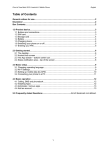
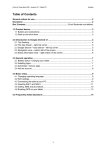
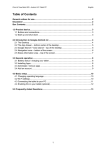
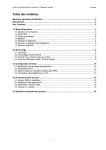
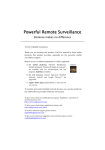
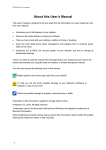
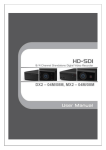


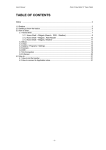
![XP User Manual - 5.3 MB [PDF File]](http://vs1.manualzilla.com/store/data/005830339_1-810b3fa463f4aba990f28f60b6ecf44b-150x150.png)
